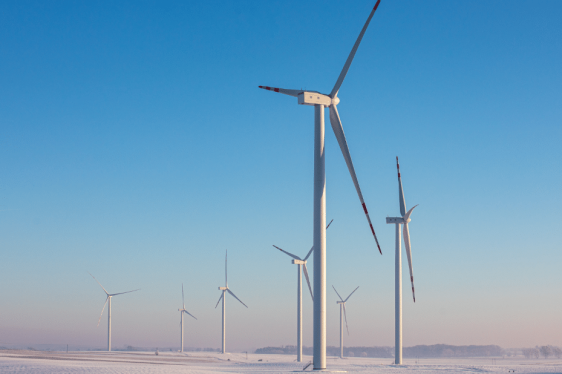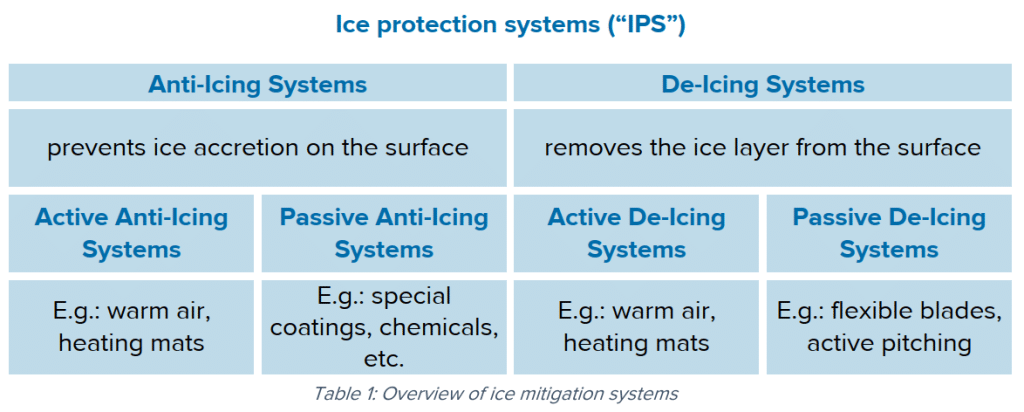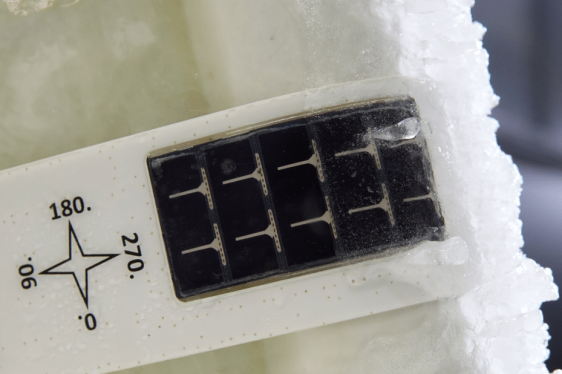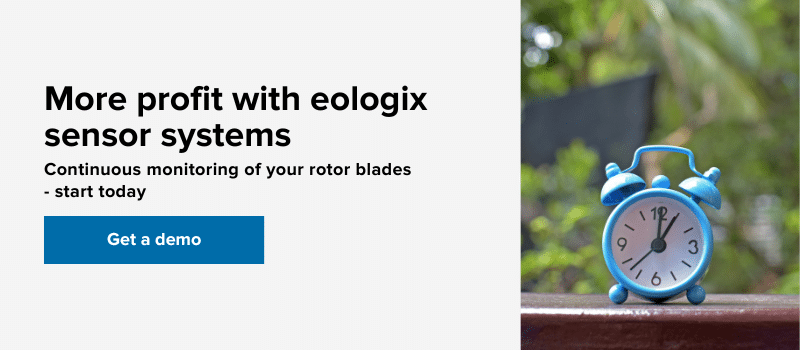TECHNOLOGY | 9 MIN TO READ
Anti-icing vs. De-icing – what's the difference?
Would you like to know more details? Have a look at our whitepaper about ice detection and get to know every interesting detail.

In winter, especially in northern regions or colder regions (so-called cool climate regions), wind turbines are exposed to snow, ice and frost. Icing can significantly impair the performance of wind turbines. Intelligent de-icing systems minimize downtimes and thus yield losses.
Different processes
Anti-icing systems can be divided into two main categories: Anti-icing systems (anti-icing systems) and De-icing systems (de-icing systems). Anti-icing systems prevent ice from accumulating on the rotor blades, while de-icing systems remove an existing layer of ice from the rotor blade surface.

Anti-icing systems
Anti-icing systems are those that protect the wind turbine from icing. Specifically, this means that anti-icing systems prevent the formation of ice on the rotor blade surface. These systems can be divided into active systems, such as electronic heating elements in the rotor blades or hot air heating, and passive systems, such as special coatings, black paint or chemicals.
In contrast to de-icing systems, wind turbines can remain in operation as ice formation on the rotor blade surface is prevented.

De-icing systems
De-icing systems are de-icing systems that remove an existing layer of ice that has formed on the rotor blades. They can also be divided into active systems, such as electronic heating elements in the rotor blades or hot air heating, and passive systems. However, the system must be stopped either manually or automatically for de-icing. Once the rotor blades have been checked and classified as ice-free, the affected wind turbines can be put back into operation.
Whether an active ice protection system is used as an anti-icing or de-icing system depends largely on the heating control strategy used, which in turn depends on various operational constraints, such as the permission for turbines to rotate with ice on the blades, operating restrictions for wind turbines, etc.
Read more about different heating control strategies in our whitepaper – Blade heating.Whitepaper Blade Heating
Risks associated with iced rotor blades
Wind turbines are designed to operate for 20 to sometimes even 30 years. During this time, they should deliver the maximum energy yield reliably and with the highest possible technical availability.
However, icing can significantly impair the performance of wind turbines in many respects. These include
- Downtimes that interrupt operation,
- yield losses,
- damage to the turbine itself,
- jeopardizing the safety of the service team and other people due to ice fall and ice throw,
- shortened service life due to increased loads on individual components and
- high costs for repairs.
You can find more information on the risk factor of icing in our blog article Dangers and risks due to ice formation on wind turbines.
When is blade heating necessary?
The need for blade heating depends on various factors, such as location, weather conditions and turbine size. A good indicator is the loss of revenue (i.e. how much of the annual energy yield is lost due to icing of the rotor blades and the associated downtimes).
As a rule of thumb, the following losses justify the integration of a blade heating system:
- 3-5% AEP losses – when building a new wind turbine
- >5% AEP losses – for retrofitting existing turbines (due to the higher cost of retrofitting blade heaters)
Recoginizing icing at an early stage and acting accordingly
In order to optimize the performance of a wind turbine, it is crucial to detect icing at an early stage and react with appropriate measures. Continuous monitoring of the rotor blades, whether with or without automatic restart, can be a decisive factor here. Ensure that your system is protected against icing in good time.







